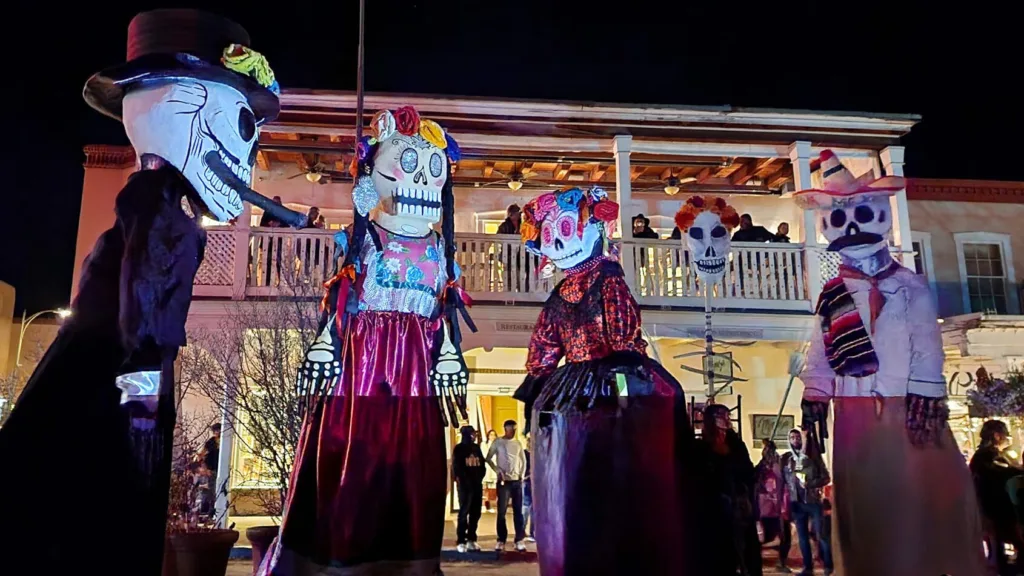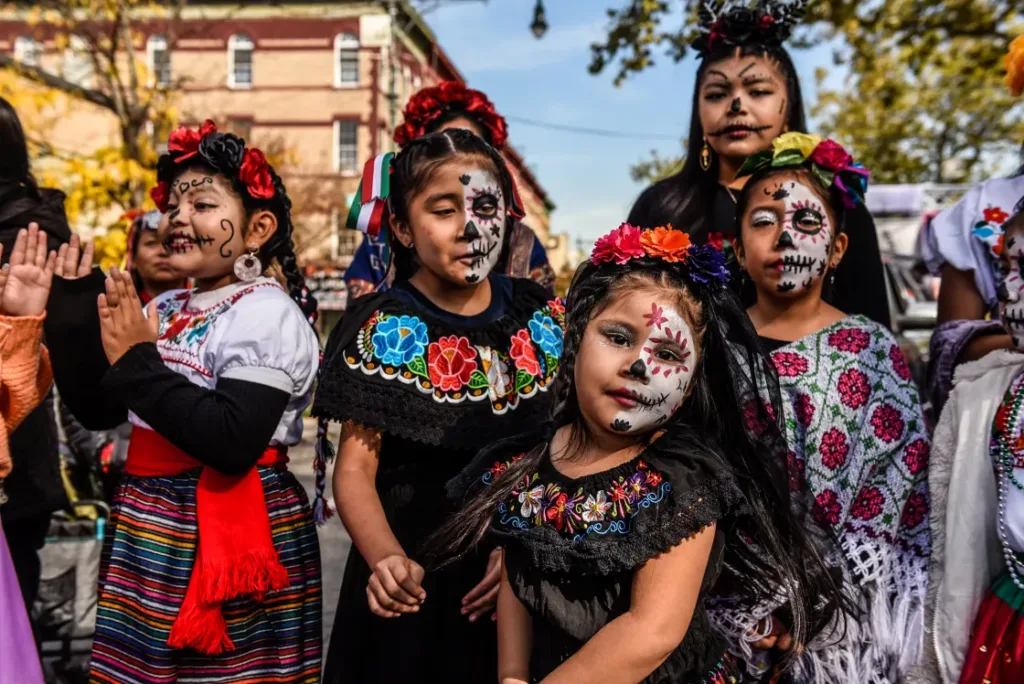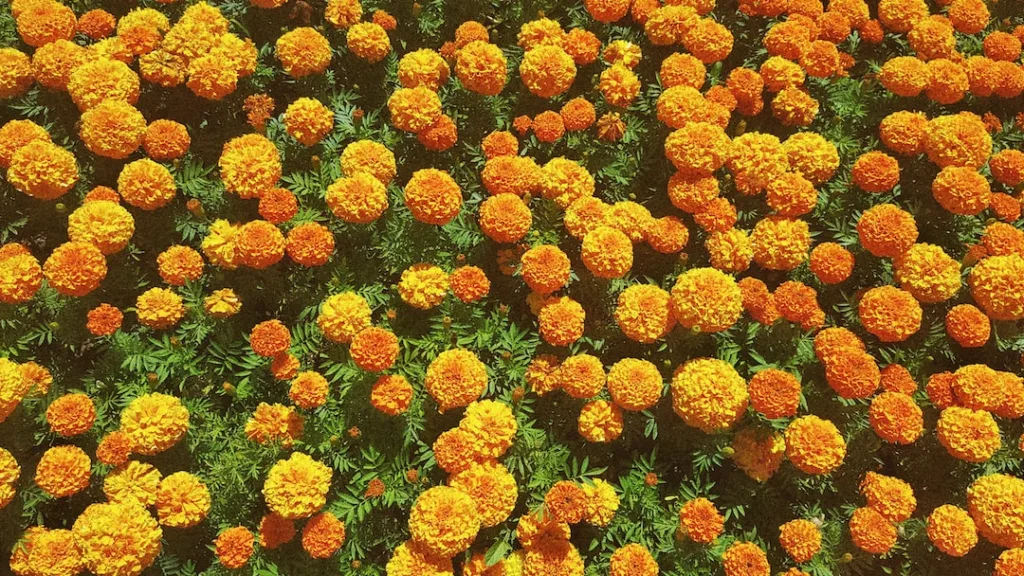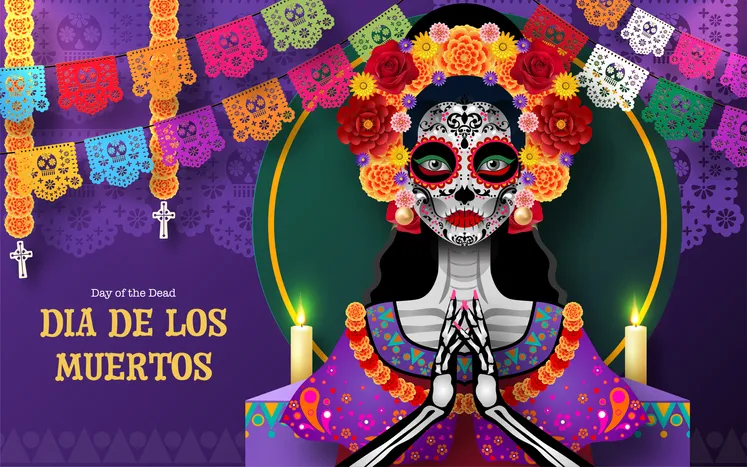What is Day of the Dead?
Day of the Dead, also known as Día de los Muertos, is a vibrant and culturally rich Mexican holiday that combines ancient Aztec customs with All Souls’ Day. It is observed on November 1 and 2 and serves as a way to remember and honor deceased ancestors. Unlike the somber tone of traditional mourning, Day of the Dead celebrations emphasize the joy of life and the belief that death is a natural part of the cycle. This article will explore the origin, history, customs, and cultural significance of Day of the Dead, as well as its evolution and popularity in recent years.

Day of the Dead is deeply rooted in Mexican culture and is celebrated with great enthusiasm and excitement. It is a time for families to unite and honor their ancestors, celebrating their lives rather than mourning their deaths. The holiday is marked by colorful decorations, lively music, and delicious traditional foods. It is a celebration of life and a way to keep the memory of loved ones alive.
Table of Contents
Origins and History of Day of the Dead
The roots of Day of the Dead can be traced back to the rituals honoring the dead in pre-Columbian Mesoamerica. The Aztecs and other Nahua people believed that the souls of the deceased traveled to the Land of the Dead after death. These ancient traditions were later influenced by Catholicism when the Spanish colonized Mexico. The fusion of Indigenous Mexican beliefs and Catholic customs gave rise to the unique and vibrant celebration known as Day of the Dead.
The exact origins of the holiday are still debated among scholars and historians. Some argue that it has Indigenous Mexican or Aztec influences, pointing to the similarities between Day of the Dead and ancient Nahua rituals. Others believe that it is a rebranded version of the Spanish Catholic holiday, All Souls’ Day. Regardless of its origins, Day of the Dead has become an integral part of Mexican culture and identity.
One example of an Indigenous Mexican influence on the holiday is the use of marigold flowers in Day of the Dead celebrations. Marigolds, also known as cempasúchil, are believed to attract the souls of the deceased with their vibrant colors and strong scent. They are used to decorate altars and gravesites, creating a welcoming path for the spirits to follow. This tradition has its roots in Aztec beliefs, where marigolds were considered sacred flowers associated with death and rebirth.

Significance and Cultural Importance
Day of the Dead holds great cultural importance in Mexico and has gained visibility and popularity in other parts of the world as well. It is not a day of mourning, but rather a festive celebration of life and a way to honor and remember deceased loved ones. The belief is that during this time, the spirits of the dead return to the world of the living to be reunited with their families and enjoy the offerings left for them.It is a time for families to come together, share stories, and celebrate the memories of their ancestors.
The cultural significance of Day of the Dead can be seen in the various customs and traditions associated with the holiday. One such tradition is the creation of sugar skulls, or calaveras de azúcar, which are intricately decorated with colorful icing and designs. These sugar skulls are often personalized with the names of deceased loved ones and placed on altars as offerings. The making of sugar skulls is a cherished activity that brings families together, allowing them to express their creativity while honoring their ancestors.
Day of the Dead has also made its mark in popular culture, both in Mexico and internationally. It has been featured in movies, such as “Spectre” and “Coco,” which have further popularized the holiday and its traditions. The distinctive imagery and symbolism associated with Day of the Dead, such as sugar skulls and vibrant marigold flowers, have become iconic representations of Mexican culture. This cultural influence can be seen in Day of the Dead-themed merchandise and decorations that are now widely available in many countries.

Traditional Customs and Rituals
One of the most prominent customs of Day of the Dead is the construction of altars, known as ofrendas, in homes and public spaces. These altars are adorned with candles, photographs of the deceased, colorful papel picado (decorative paper), marigold flowers, pan de muerto (sweet bread), and sugar skulls. The altars serve as a way to welcome the spirits of the departed and provide them with their favorite foods and beverages.
Families also visit the gravesites of their loved ones during this time, cleaning and decorating the tombstones with flowers and personal mementos. It is a time for reflection, prayer, and sharing stories about the deceased. The use of skeletons and skulls, both in artwork and sugar candy, is a prominent feature of Day of the Dead, reminding people that death is a natural part of life.
Another important tradition of Day of the Dead is the creation of papel picado, decorative paper cutouts hung as decorations during the holiday. The intricate designs and vibrant colors of papel picado add to the festive atmosphere of Day of the Dead celebrations. The paper cutouts often depict skeletons, flowers, and other symbols associated with the holiday. Making papel picado is a traditional art form that has been passed down through generations, and it is an important part of the cultural heritage of Mexico.
Altars and Offerings
Altars play a central role in Day of the Dead celebrations. They are created to honor and remember deceased loved ones. The offerings placed on the altars are intended to welcome the spirits of the ancestors and provide them with the items they enjoyed in life. These offerings can include favorite foods, drinks, personal belongings, and even items that represent the deceased person’s profession or hobbies. The belief is that the spirits will consume the essence of the offerings, leaving the physical remains for the living to enjoy.
The altars are often decorated with photographs of the deceased, allowing families to remember their loved ones and keep their memory alive visually. Candles are also an important part of the altars, symbolizing the light that guides the spirits back to the world of the living. The scent of copal incense, often burned during Day of the Dead celebrations, is believed to attract and purify the spirits, creating a welcoming environment for their return.

Day of the Dead Celebrations Around the World
While Day of the Dead originated in Mexico, it is also celebrated by people of Mexican heritage in other countries, including the United States, Italy, and the Philippines. These celebrations often include parades, festivals, and costumes, with the iconic figure of La Catrina, an elegantly dressed skeleton, being a popular symbol. Day of the Dead celebrations continue to evolve and gain popularity globally, as people recognize and appreciate the cultural richness and significance of this vibrant holiday.
In the United States, Day of the Dead celebrations are particularly prominent in areas with large Mexican communities, such as Los Angeles, San Francisco, San Diego, and Chicago. These celebrations often feature elaborate parades, where participants dress up in colorful costumes and paint their faces as elaborately decorated skulls. Festivals and street fairs are also held, showcasing traditional music, dance, and food.
In Italy, Day of the Dead celebrations have been influenced by the Catholic traditions of All Saints’ Day and All Souls’ Day. Italians visit cemeteries to pay their respects to their deceased loved ones, lighting candles and leaving flowers on their graves. In some regions, it is also common to prepare special meals and share them with family and friends.
In the Philippines, Day of the Dead is known as “Undas” or “Araw ng mga Patay.” It is a time for families to gather at cemeteries and remember their departed loved ones. Gravesites are cleaned and decorated with flowers, and prayers are offered for the souls of the deceased. The Filipino tradition of “pagpag” also takes place during this time, where families visit multiple cemeteries to pay their respects to different relatives.
Day of the Dead in Mexico City 2024
Día de los Muertos means Day of the Dead parade in Mexico City is scheduled to take place on November 2, 2024. The parade route starts at Bosque de Chapultepec Park and goes along the iconic Paseo de la Reforma Avenue, ending in the CDMX Zocalo. This central location allows for easy access and provides a stunning backdrop for the festivities.
Read More about Day of the Dead in Mexico City Parade 2023 here: Day of Day Parade Mexico City 2023
Conclusion
Day of the Dead, a Mexican holiday that combines ancient Aztec customs with All Souls’ Day, is a joyful celebration of life and a way to remember and honor deceased loved ones. The origins of the holiday can be traced back to pre-Columbian Mesoamerica and have been influenced by both Indigenous Mexican beliefs and Catholic traditions. Day of the Dead holds great cultural importance in Mexico and has gained visibility and popularity worldwide. Through the construction of altars, the offering of favorite items and foods, and the vibrant imagery of skeletons and skulls, Day of the Dead serves as a reminder to celebrate life and cherish the memories of those who have passed away.
